Introduction to Osaka: Japan’s Most Vibrant City
Welcome to Osaka, Japan’s kitchen and entertainment capital! While Tokyo might get most of the international spotlight, Osaka offers American travelers an incredible blend of traditional Japanese culture, modern attractions, and what many consider the best food scene in all of Japan.
Located in the Kansai region, Osaka is Japan’s third-largest city and has historically been known as “Tenka no Daidokoro” (the nation’s kitchen) due to its importance as a trading hub for rice and other goods. Today, this culinary legacy lives on through Osaka’s incredible food culture and the local saying “kuidaore” (eat yourself into bankruptcy).
What makes Osaka different from Tokyo and Kyoto? Osakans are known for their friendliness, humor, and straightforward nature. Unlike the sometimes reserved Tokyo residents, locals here are more likely to strike up conversations with visitors. The city has a more relaxed vibe, with a distinct dialect (Kansai-ben) that even Japanese visitors from other regions find charming.
Best Time to Visit Osaka
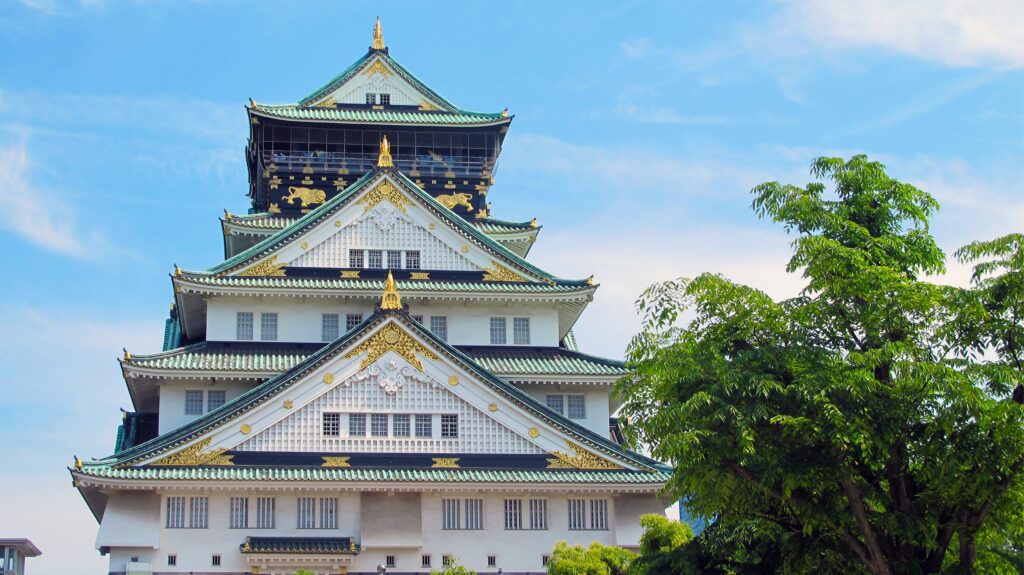
- Spring (late March to early May): Cherry blossom season transforms the city, especially around Osaka Castle Park. Temperatures range from 54-72°F (12-22°C).
- Fall (October to November): Stunning autumn colors and comfortable temperatures between 57-75°F (14-24°C) make this another prime time to visit.
- Avoid if possible: Early summer (June-July) brings the rainy season, while August is hot and humid with temperatures often exceeding 86°F (30°C).
Top Tourist Attractions in Osaka
1. Osaka Castle
This iconic symbol of Osaka stands majestically in the heart of the city. Built in the late 16th century by the powerful warlord Toyotomi Hideyoshi, Osaka Castle has been destroyed and rebuilt several times throughout history.
What to see:
- The eight-story main tower, reconstructed in 1931 and renovated in 1997
- Museum exhibits showcasing samurai artifacts and city history
- Sprawling castle grounds with 600 cherry trees (spectacular in spring)
- Nishinomaru Garden with its beautiful plum tree grove
Practical information:
- Hours: 9:00 AM – 5:00 PM (last entry 4:30 PM)
- Admission: ¥600 (approximately $5.50)
- Access: 10-minute walk from Tanimachi 4-chome Station or Osakajokoen Station
- Time needed: 2-3 hours
- Pro tip: Visit early in the morning to avoid crowds, especially during cherry blossom season
2. Universal Studios Japan (USJ)
One of Osaka’s biggest draws for American travelers is Universal Studios Japan, which opened in 2001 as the first Universal theme park in Asia. It’s consistently ranked among the world’s most visited theme parks.
Highlight attractions:
- Super Nintendo World: Step into the Mushroom Kingdom with Mario and friends (opened 2021)
- The Wizarding World of Harry Potter: Experience Hogwarts and Hogsmeade
- Attack on Titan XR Ride: An exhilarating virtual reality experience
- Universal Spectacle Night Parade: Featuring Mario, Harry Potter, Transformers, and Minions
Practical information:
- Hours: Generally 9:00 AM – 7:00 PM (hours vary by season)
- Admission: 1-Day Pass from ¥8,400 (approximately $76)
- Access: Direct walk from Universal City Station on the JR Yumesaki Line
- Time needed: Full day (minimum)
- Pro tip: Purchase Express Passes online in advance to skip long lines for popular attractions
3. Dotonbori District (道頓堀)
Dotonbori is Osaka’s entertainment hub and food paradise. This vibrant district along the Dotonbori Canal is known for its dazzling neon lights, massive 3D billboards, and endless dining options. It’s the perfect place to experience Osaka’s “eat till you drop” philosophy.
Must-see spots:
- The famous Glico Running Man billboard (perfect photo opportunity)
- Ebisu Bridge with views of the illuminated canal
- Kuidaore Taro (the iconic drum-playing clown mascot)
- Hozenji Yokocho alley for a glimpse of old Osaka
Food highlights:
- Takoyaki (octopus balls) from Takoyaki Wanaka
- Okonomiyaki (savory pancakes) at Mizuno
- Kushi-katsu (deep-fried skewers) at Daruma
- Crab dishes at Kani Doraku under the giant moving crab sign
Practical information:
- Best time to visit: Early evening through night for the full illuminated experience
- Access: 5-minute walk from Namba Station
- Time needed: 3-4 hours (more if dining)
- Pro tip: Join the locals by taking a “food crawl” rather than sitting for one large meal
4. Kuromon Ichiba Market (黒門市場)
Known as “Osaka’s Kitchen,” this 580-meter long covered market has been serving locals and food enthusiasts for over 190 years. With approximately 150 shops and stalls, it’s the perfect place to sample fresh seafood and local specialties.
What to try:
- Fresh sashimi and sushi
- Grilled scallops and oysters
- Wagyu beef skewers
- Tamagoyaki (Japanese sweet omelet)
- Seasonal fruits and Japanese sweets
Practical information:
- Hours: Most shops open 9:00 AM – 6:00 PM
- Access: 3-minute walk from Nipponbashi Station
- Time needed: 1-2 hours
- Pro tip: Bring cash as many smaller vendors don’t accept cards
5. Shitennoji Temple (四天王寺)
Founded in 593 AD by Prince Shotoku, Shitennoji is one of Japan’s oldest Buddhist temples and offers a peaceful retreat from the urban energy of Osaka.
Highlights:
- Five-story pagoda
- Gokuraku-jodo Garden, designed to represent Buddhist paradise
- Monthly flea market (21st of each month)
- Treasure House museum with important Buddhist artifacts
Practical information:
- Hours: 8:30 AM – 4:30 PM
- Admission: ¥300 (approximately $2.70) for the inner precinct
- Access: 5-minute walk from Shitennoji-mae Yuhigaoka Station
- Time needed: 1-2 hours
- Pro tip: Combine with a visit to nearby Tennoji Park for a relaxing afternoon
Osaka’s Incredible Food Experiences
1. Dotonbori Street Food Tour
Osaka’s reputation as Japan’s food capital is well-deserved, and Dotonbori is the epicenter of this culinary wonderland. Taking a guided food tour here is one of the best ways to sample multiple specialties with expert commentary.
Recommended experiences:
- Guided evening food tours: Several companies offer English-language tours (prices range from $85-150)
- Self-guided food crawl: Follow this route for the perfect DIY experience:
- Start with takoyaki near Ebisu Bridge
- Try kushi-katsu at Daruma
- Sample okonomiyaki at Mizuno or Chibo
- Finish with sweet treats like melon pan ice cream
Popular dishes to try:
- Takoyaki (octopus balls) – must-try Osaka street food
- Okonomiyaki (savory pancakes with various toppings)
- Negiyaki (thin okonomiyaki with lots of green onions)
- Kushi-katsu (breaded, deep-fried skewers)
- Taiko-manju (drum-shaped sweet bean cakes)
Pro tip: Visit between 5-7 PM to avoid the worst crowds but still enjoy the vibrant evening atmosphere.
2. Takoyaki Cooking Class
Instead of just eating takoyaki, why not learn to make these delicious octopus balls yourself? Several cooking schools in Osaka offer English-language classes where you can master this iconic street food.
Recommended classes:
- Osaka Cooking Class: 2-hour takoyaki and okonomiyaki class ($65 per person)
- Eat Osaka: 2.5-hour street food cooking class ($75 per person)
- Osaka Kitchen: Private takoyaki lessons with market tour ($90 per person)
What you’ll learn:
- Preparing the perfect batter
- Properly timing the flip of the takoyaki balls
- Traditional toppings and sauce combinations
- Cultural significance of takoyaki in Osaka’s food history
Pro tip: Book at least 1-2 weeks in advance as popular cooking classes fill up quickly, especially during peak tourist seasons.
3. Best Okonomiyaki Restaurants
Okonomiyaki, often described as a Japanese savory pancake, is another Osaka specialty that shouldn’t be missed. These restaurants offer the most authentic experiences:
Mizuno (美津の)
- Osaka’s oldest okonomiyaki restaurant (since 1945)
- Known for their yamaimo-yaki (made with mountain yam)
- Address: 1-4-15 Dotonbori, Chuo-ku
- Expect to wait 30-60 minutes during peak hours
Chibo (千房)
- Chain restaurant with reliable quality and English menus
- Beautiful Dotonbori location with canal views
- Address: 1-5-8 Dottenbori, Chu-ku
- Reservation recommended for dinner
Fukutaro (福太郎)
- Local favorite with reasonable prices
- Specializes in modern variations including cheese okonomiyaki
- Address: 1-7-28 Dottenbori, Chu-ku
- English picture menu available
Pro tip: Most okonomiyaki restaurants have counter seating where you can watch the chefs prepare the dish on a hot griddle right in front of you—opt for these seats for the best experience!
4. Kushi-katsu Experience
Kushi-katsu (deep-fried skewers) is a quintessential Osaka food experience, with the most famous spot being the original Daruma restaurant in Shinsekai.
The Daruma experience:
- Founded in 1929, this is where kushi-katsu was born
- Remember the golden rule: NO double-dipping in the communal sauce!
- Order a variety of skewers (meat, seafood, and vegetables)
- Address: 5-4-8 Ebisu-Higashi, Naniwa-ku
Other recommended kushi-katsu spots:
- Yaekatsu: More upscale, less crowded option
- Kushikatsu Daruma Dotonbori: Branch of the original in the tourist district
Pro tip: Vegetarians can enjoy kushi-katsu too! Common vegetable options include eggplant, bell pepper, asparagus, and shiitake mushrooms.
Conveyor Belt Sushi (Kaiten-zushi)
For budget-friendly yet delicious sushi, Osaka’s conveyor belt sushi restaurants offer excellent value. These restaurants feature plates of sushi circulating on a conveyor belt, with prices typically determined by plate color.
Top recommendations:
- Kura Sushi: Tech-savvy chain with tablets for ordering and a prize system
- Genroku Sushi: Local favorite with generous portions
- Daiki Suisan: Known for fresh seafood at reasonable prices
How it works:
- Sit at the counter or table beside the conveyor belt
- Take plates that interest you as they pass by
- Order special items using the tablet or by asking staff
- When finished, a staff member will count your plates to calculate your bill
- Most plates range from ¥100-500 ($0.90-$4.50)
Pro tip: Visit during lunch hours (11:30 AM – 1:30 PM) for the best value set menus.
Day Trips from Osaka
Osaka’s central location makes it the perfect base for exploring other fascinating destinations in the Kansai region. Here are the best day trips, all accessible within 1 hour by train.
1. Kyoto
The former imperial capital of Japan is just 30 minutes from Osaka by bullet train and offers a striking contrast with its 1,600 Buddhist temples, 400 Shinto shrines, and 17 UNESCO World Heritage sites.
Must-see attractions:
- Fushimi Inari Shrine: Famous for its thousands of vermilion torii gates
- Kinkaku-ji (Golden Pavilion): Stunning gold-leaf covered temple
- Arashiyama Bamboo Grove: Magical forest path perfect for photos
- Gion District: Historic geisha district with preserved traditional architecture
Getting there:
- JR Special Rapid Service: 30 minutes from Osaka Station (¥560/$5)
- Shinkansen: 15 minutes from Shin-Osaka Station (¥1,420/$13)
One-day itinerary suggestion:
- Start early at Fushimi Inari (before crowds arrive)
- Visit Kiyomizu-dera Temple mid-morning
- Lunch in Gion area
- Afternoon at Kinkaku-ji and/or Ryoan-ji
- Early evening stroll through Arashiyama
- Return to Osaka for dinner
Pro tip: Consider purchasing a one-day bus pass (¥600/$5.50) for getting around Kyoto efficiently.
2. Nara
Japan’s first permanent capital is home to friendly sacred deer and some of the country’s oldest Buddhist temples. It’s just 45 minutes from Osaka by train.
Highlights:
- Nara Park: Home to over 1,200 free-roaming deer considered divine messengers
- Todai-ji Temple: Housing Japan’s largest bronze Buddha statue
- Kasuga Taisha Shrine: Famous for its bronze lanterns
- Naramachi: Well-preserved merchant district with traditional architecture
Deer interaction guidelines:
- Purchase official deer crackers (shika-senbei) for ¥200
- Bow to the deer and they might bow back before feeding
- Keep tickets and valuables secure as deer may try to eat them
- Never tease or withhold food after showing it to them
Getting there:
- JR Yamatoji Line: 45 minutes from JR Osaka Station (¥800/$7.30)
- Kintetsu Line: 35 minutes from Osaka-Namba Station (¥560/$5)
Pro tip: A half-day is sufficient for seeing Nara’s main attractions, making it possible to combine with a half-day in Kyoto for an ambitious but rewarding day trip.
3. Kobe
Known worldwide for its premium beef, Kobe is a sophisticated port city with a unique international flavor, located just 20 minutes from Osaka.
What to experience:
- Kobe Beef: Try this world-famous delicacy at restaurants like Steakland or Wakkoqu
- Kobe Harborland: Shopping and entertainment complex with great city views
- Kitano-cho: Historic district with preserved 19th-century Western-style houses
- Nunobiki Herb Garden: Accessible by ropeway with panoramic city views
- Sake breweries in Nada district: Tour and taste at Japan’s top sake producing region
Getting there:
- JR Special Rapid Service: 20 minutes from Osaka Station (¥410/$3.70)
- Hanshin Line: 30 minutes from Umeda Station (¥320/$2.90)
Pro tip: For the budget-conscious, lunch sets at Kobe beef restaurants are significantly cheaper than dinner (around $40-60 instead of $100+) while still offering the authentic experience.
4. Himeji
Home to Japan’s most spectacular feudal castle, Himeji makes an excellent day trip just 1 hour from Osaka.
Main attractions:
- Himeji Castle: Japan’s finest surviving feudal castle and a UNESCO World Heritage site
- Koko-en Garden: Nine connected traditional gardens next to the castle
- Mount Shosha: Forested mountain with ancient temple complex (featured in “The Last Samurai”)
Getting there:
- JR Special Rapid Service: 1 hour from Osaka Station (¥1,490/$13.50)
- Shinkansen: 30 minutes from Shin-Osaka Station (¥3,740/$34)
Pro tip: Visit on weekdays to avoid crowds, and arrive early in the morning (opening time is 9:00 AM) for the best experience.
Off-the-Beaten-Path Experiences in Osaka
After checking off the major attractions, dive deeper into Osaka’s local culture with these authentic experiences that most tourists miss.
1. Shinsekai District
Developed before World War II and left largely unchanged, Shinsekai (meaning “New World”) offers a nostalgic glimpse into Japan’s past with its retro atmosphere and local flavor.
What to experience:
- Tsutenkaku Tower: Osaka’s version of the Eiffel Tower offering city views
- Traditional game arcades: Try classic games like pachinko and retro video games
- Luna Park Shopping Street: Covered shopping arcade with quirky shops and eateries
- Local izakaya (pubs): Join locals for casual drinking and dining
Safety note: While Shinsekai has a reputation as Osaka’s “rougher” neighborhood, it’s perfectly safe for tourists during daytime and evening hours. Just exercise normal urban precautions after dark.
Pro tip: Visit at night when the area comes alive with neon lights and lively atmosphere.
2. Spa World
Experience Japanese bathing culture at this enormous bathhouse complex featuring themed baths from around the world.
Facility highlights:
- European Zone: Recreations of Roman, Greek, and Finnish baths
- Asian Zone: Japanese, Persian, and Balinese bath styles
- Outdoor pools and water slides (swimsuits required in these areas)
- Relaxation rooms and saunas
Japanese bath etiquette:
- Completely nude bathing is mandatory in gender-separated bath areas
- Shower thoroughly before entering baths
- Tie up long hair and don’t let it touch the water
- No photography in bathing areas
- Cover tattoos if possible (small tattoos may be allowed)
Practical information:
- Hours: 24 hours daily (facilities rotate between genders monthly)
- Admission: ¥2,700 ($24.50) for 3 hours, ¥2,900 ($26.50) for all day
- Address: 3-4-24 Ebisu-higashi, Naniwa-ku
- Access: 5-minute walk from Dobutsuen-mae Station
Pro tip: Visit on weekdays to avoid crowds and enjoy a more relaxing experience.
3. Sumiyoshi Taisha Shrine
One of Japan’s oldest Shinto shrines, Sumiyoshi Taisha features a unique architectural style predating Buddhist influence on shrine design.
Highlights:
- Sorihashi Bridge: Distinctive high-arched bridge
- Pure Japanese architecture: Unlike the Chinese-influenced styles seen elsewhere
- Peaceful gardens: Less crowded than other major attractions
- Traditional rituals: If you’re lucky, you might witness a Shinto ceremony
Practical information:
- Hours: 6:00 AM – 5:00 PM (grounds always open)
- Admission: Free
- Access: Direct access from Sumiyoshi Taisha Station
- Time needed: 1-2 hours
Pro tip: Visit during New Year’s celebrations (Jan 1-3) to experience a traditional Japanese hatsumode (first shrine visit of the year), though be prepared for crowds.
4. Hidden Food Alleys
Discover Osaka’s less touristy gourmet spots in these local food streets:
Tenma neighborhood:
- Tenjinbashisuji Shopping Street: Japan’s longest shopping arcade at 2.6km
- Tenma Honmachi Kariin: Lane of small restaurants popular with locals
- Specialty: Offal dishes and casual izakaya
Fukushima district:
- Fukushima Shotengai: Collection of small restaurants and bars
- Known for: Quality sake bars and traditional oden stew restaurants
- Local atmosphere: Very few tourists make it to this authentic area
Practical information:
- Best explored in evening hours (6:00 PM – 10:00 PM)
- Many small establishments may not have English menus
- Bring cash as credit cards aren’t always accepted
- Restaurant reservations recommended for dinner, especially on weekends
Pro tip: Use the “pointing and smiling” technique if language is a barrier—most restaurant owners appreciate your interest in their establishments and will help you order.
Practical Information for American Travelers
Getting Around Osaka
Osaka has an extensive and efficient public transportation system that makes navigating the city easy for visitors.
Subway system:
- 8 subway lines covering most tourist areas
- Announcements and signage in English
- Trains run from 5:00 AM to midnight
- Base fare from ¥180 ($1.60), depending on distance
Recommended transport passes:
- Osaka Amazing Pass: 1-day (¥2,700/$24.50) or 2-day (¥3,600/$32.70) passes including unlimited subway/bus travel and free entry to 35+ attractions
- ICOCA card: Rechargeable IC card for all public transport (¥2,000/$18 initial charge including ¥500 deposit)
- Kansai One Pass: Special IC card for foreign tourists with discounts at shops and attractions
Getting from Kansai International Airport (KIX):
- JR Haruka Limited Express: 50 minutes to Shin-Osaka Station (¥3,000/$27)
- Nankai Rapi:t: 45 minutes to Namba Station (¥1,430/$13)
- Airport Limousine Bus: 50-60 minutes to various city locations (¥1,550/$14)
Pro tip: Google Maps works excellently for navigation in Osaka, showing accurate train times and platform information.
Accommodation Recommendations by Budget
Budget options ($30-80/night):
- J-Hoppers Osaka: Well-located hostel with private room options
- Hotel Chuo Oasis: Simple business hotel near Dotonbori
- Osaka Guesthouse HIVE: Modern capsule hotel with social areas
Mid-range options ($80-150/night):
- Cross Hotel Osaka: Stylish hotel steps from Dotonbori
- Hotel Gracery Osaka Namba: Convenient location for food and shopping
- Mitsui Garden Hotel Osaka Premier: Near Umeda with quality amenities
Luxury options ($150+/night):
- Conrad Osaka: Stunning views from high-rise luxury hotel
- The Ritz-Carlton Osaka: Classic luxury near Umeda Station
- St. Regis Osaka: Elegant accommodation on Midosuji Boulevard
Best areas to stay:
- Namba/Dotonbori: Perfect for first-time visitors, near food and nightlife
- Umeda/Osaka Station: Great for shopping and transportation connections
- Honmachi: Quieter business district with good value accommodations
Pro tip: Book accommodations at least 3 months in advance for cherry blossom season (late March-early April) and fall foliage season (November).
Language Tips
While Osaka has become increasingly foreigner-friendly, knowing a few Japanese phrases will enhance your experience and is appreciated by locals.
Essential phrases:
- “Konnichiwa” = Hello
- “Arigato gozaimasu” = Thank you
- “Sumimasen” = Excuse me/Sorry
- “Eigo menu arimasu ka?” = Do you have an English menu?
- “Ikura desu ka?” = How much is it?
- “Oishii!” = Delicious!
Language resources:
- Google Translate app with offline Japanese download
- Papago app (particularly good for Asian languages)
- Point-and-speak phrasebooks
English assistance:
- Most major tourist attractions have English signage
- Hotels with international chains generally have English-speaking staff
- Look for “English OK” signs at restaurants
- JR tourist information centers provide English assistance
Pro tip: Learn some Osaka dialect phrases like “Mokarimakka?” (How’s business?) to delight locals with your cultural knowledge.
Money-Saving Advice
Japan has a reputation as an expensive destination, but Osaka offers many ways to experience the city without breaking the bank.
Budget-friendly tips:
- Convenience stores (7-Eleven, Lawson, Family Mart) offer quality, affordable meals
- Lunch sets (teishoku) are significantly cheaper than dinner at the same restaurants
- Standing bars (tachinomi) offer drinks and small plates at lower prices
- Tax-free shopping available for purchases over ¥5,000 at participating stores (bring your passport)
Free attractions:
- Osaka Castle Park (outer grounds)
- Nakanoshima Park
- Tenzinbashisuzi Shopping Street
- Shinsaibasi-Suji Shopping Street
- Umeda Sky Building’s ground floor garden (rooftop observatory requires ticket)
Transportation savings:
- Walk between attractions in the same district instead of taking trains for short distances
- Consider day passes if making 3+ trips in one day
- Cycle with rental bikes (Docomo Cycle share from ¥200/$1.80 for 30 minutes)
Pro tip: Many museums offer free or discounted admission on specific days of the month—check official websites in advance.
FAQs About Visiting Osaka
Is Osaka safe for American tourists?
Osaka is extremely safe for tourists. Japan consistently ranks among the world’s safest countries with very low crime rates. Even late at night in entertainment districts, violent crime is rare. The biggest risks are:
- Petty theft: Occasional pickpocketing in crowded tourist areas
- Natural disasters: Earthquakes and typhoons (follow local guidance if these occur)
- Traffic: Remember cars drive on the left side of the road
Women traveling alone can feel comfortable exploring Osaka day or night, though the usual urban precautions apply in nightlife districts.
How many days should I spend in Osaka?
Ideal length of stay depends on your interests:
- 3 days: Sufficient for Osaka’s major highlights
- 5 days: Comfortable pace for main attractions plus a day trip or two
- 7 days: Comprehensive exploration of Osaka plus multiple day trips
If your total Japan trip is 10-14 days, allocating 3-4 days to Osaka and using it as a base for day trips provides a good balance.
What’s the best area to stay in?
For first-time visitors, these districts offer the best combination of convenience and atmosphere:
- Namba/Dotonbori: Perfect for food enthusiasts and nightlife, central location
- Umeda/Osaka Station: Ideal for shoppers and those planning day trips, excellent transportation connections
- Shin-Osaka: Best for travelers making multiple Shinkansen trips, quieter atmosphere
Families might prefer the calmer atmosphere of Honmachi or Osaka Castle area, while budget travelers can find better deals in Tennoji or Shin-Imamiya.
Can I get by with English only?
Yes, but with some limitations. In Osaka’s tourist areas:
- Most signs and transportation announcements include English
- Major hotels and attractions have English-speaking staff
- Restaurants frequently offer English or picture menus
However, in less touristy areas:
- English-speakers become scarce
- Restaurant menus may be Japanese-only
- Be prepared to point and use simple phrases or translation apps
Having a translation app on your phone and learning a few basic Japanese phrases will significantly enhance your experience.
Is Osaka good for families with children?
Absolutely! Osaka offers numerous child-friendly attractions:
- Universal Studios Japan: Perfect for kids and teens
- Osaka Aquarium Kaiyukan: One of the world’s largest aquariums
- Kids Plaza Osaka: Interactive museum designed for children
- Tennoji Zoo: Compact zoo with 300+ animal species
Family-friendly aspects of Osaka:
- Clean, safe streets and public facilities
- Excellent public transportation
- Restaurants generally welcoming to children
- Many hotels offer family rooms or connecting rooms
Challenges for families:
- Limited baby changing facilities outside major malls and stations
- Crowded trains during rush hour (7:30-9:00 AM, 5:00-7:00 PM)
- Narrow sidewalks can be difficult with strollers in some areas
How much budget should I plan for Osaka?
Daily budget guidelines per person (excluding international flights):
Budget traveler ($75-100/day):
- Hostel dorm or capsule hotel: $25-40
- Convenience store meals and street food: $20-30
- Public transportation: $10
- Attraction admission fees: $15-25
Mid-range traveler ($150-200/day):
- 3-star hotel: $80-120
- Mix of casual and mid-range restaurants: $40-60
- Public transportation: $15
- Attraction fees and activities: $30-50
Luxury traveler ($300+/day):
- 4-5 star hotel: $200+
- Fine dining and specialty restaurants: $100+
- Taxi use and premium transportation: $50+
- VIP experiences and high-end shopping: Varies
Money-saving tips:
- 7-11 ATMs reliably work with foreign cards and often offer better exchange rates than currency exchanges
- Most establishments are still cash-centric, so carry sufficient yen
- Tipping is not customary in Japan and may even cause confusion
Conclusion: Why Osaka Should Be On Your Japan Itinerary
While Tokyo and Kyoto often dominate Japan travel itineraries, Osaka offers a unique and rewarding experience for American travelers. With its incredible food culture, warm local hospitality, perfect mix of traditional and modern attractions, and convenient location for exploring the Kansai region, Osaka deserves a prime spot on your Japan adventure.
Whether you’re fascinated by Japanese history, excited to try authentic cuisine, eager to experience vibrant urban culture, or looking for family-friendly attractions, Osaka delivers unforgettable experiences that will have you planning your return before you’ve even left.
Remember the local saying: “Osaka no kuidaore” (eat until you drop in Osaka). It perfectly captures the city’s fun-loving, food-obsessed spirit that makes visitors fall in love with this special corner of Japan.
About the Author: [Your Name] is a travel writer specializing in Japanese culture and cuisine. Having visited Osaka over a dozen times since 2010, [he/she] continues to discover new treasures in this vibrant city and considers it Japan’s most underrated destination.
Last Updated: March 2025
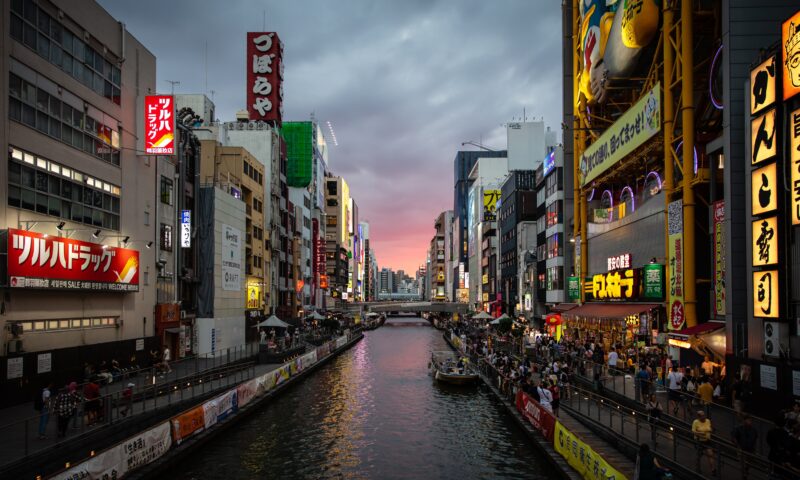
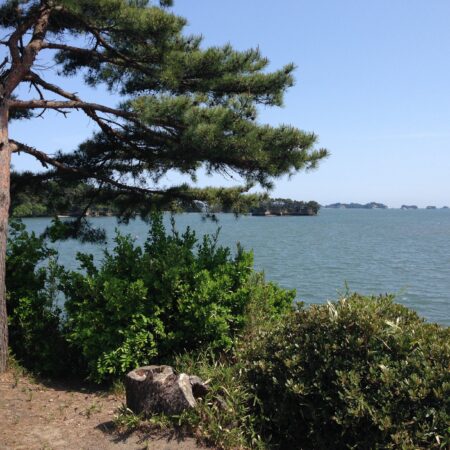
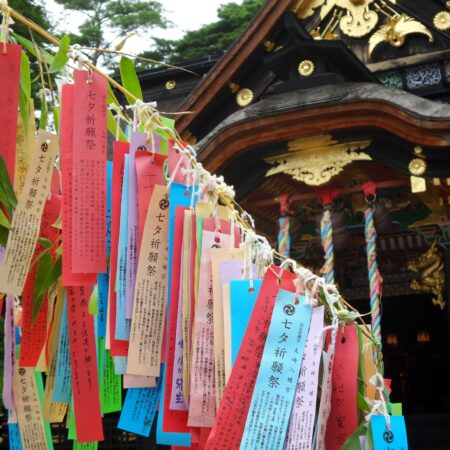
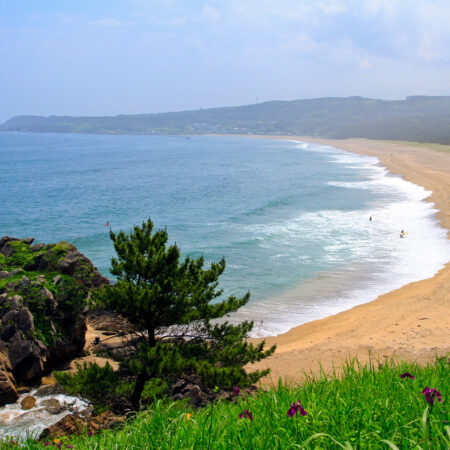
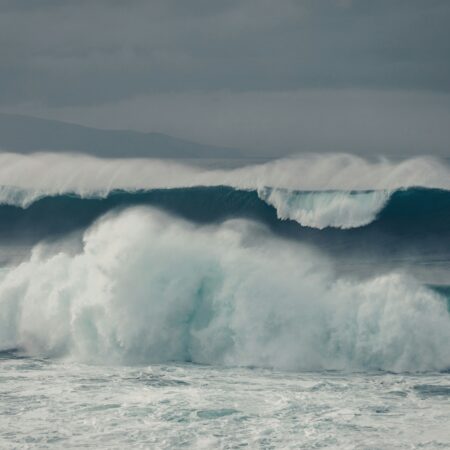
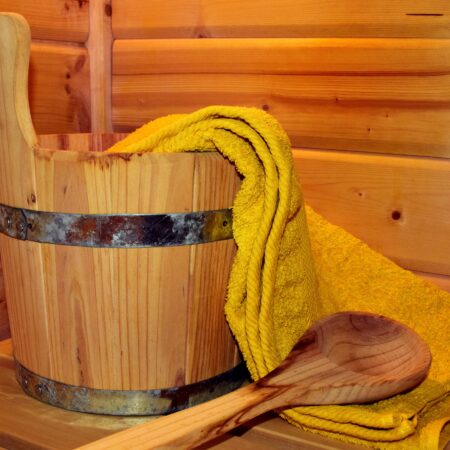
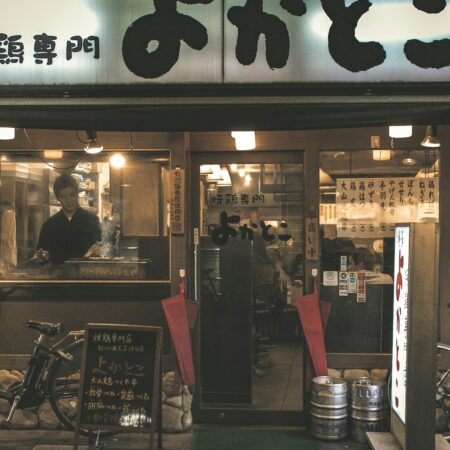
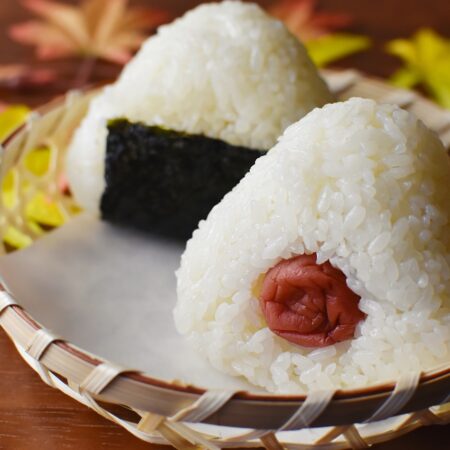
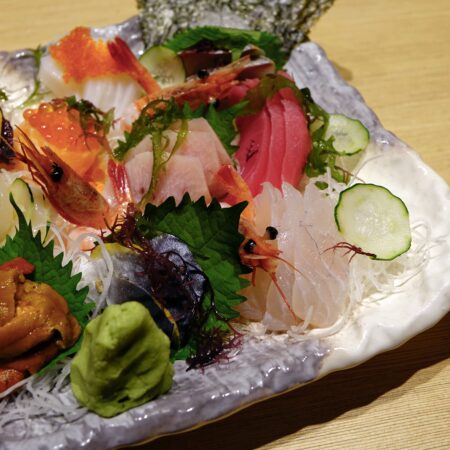
こんにちは、これはコメントです。
コメントの承認、編集、削除を始めるにはダッシュボードの「コメント」画面にアクセスしてください。
コメントのアバターは「Gravatar」から取得されます。